Next slide, please: A brief history of the corporate presentation
From million-dollar slide shows to Steve Jobs’s introduction of the iPhone, a bit of show business never hurt plain old business.
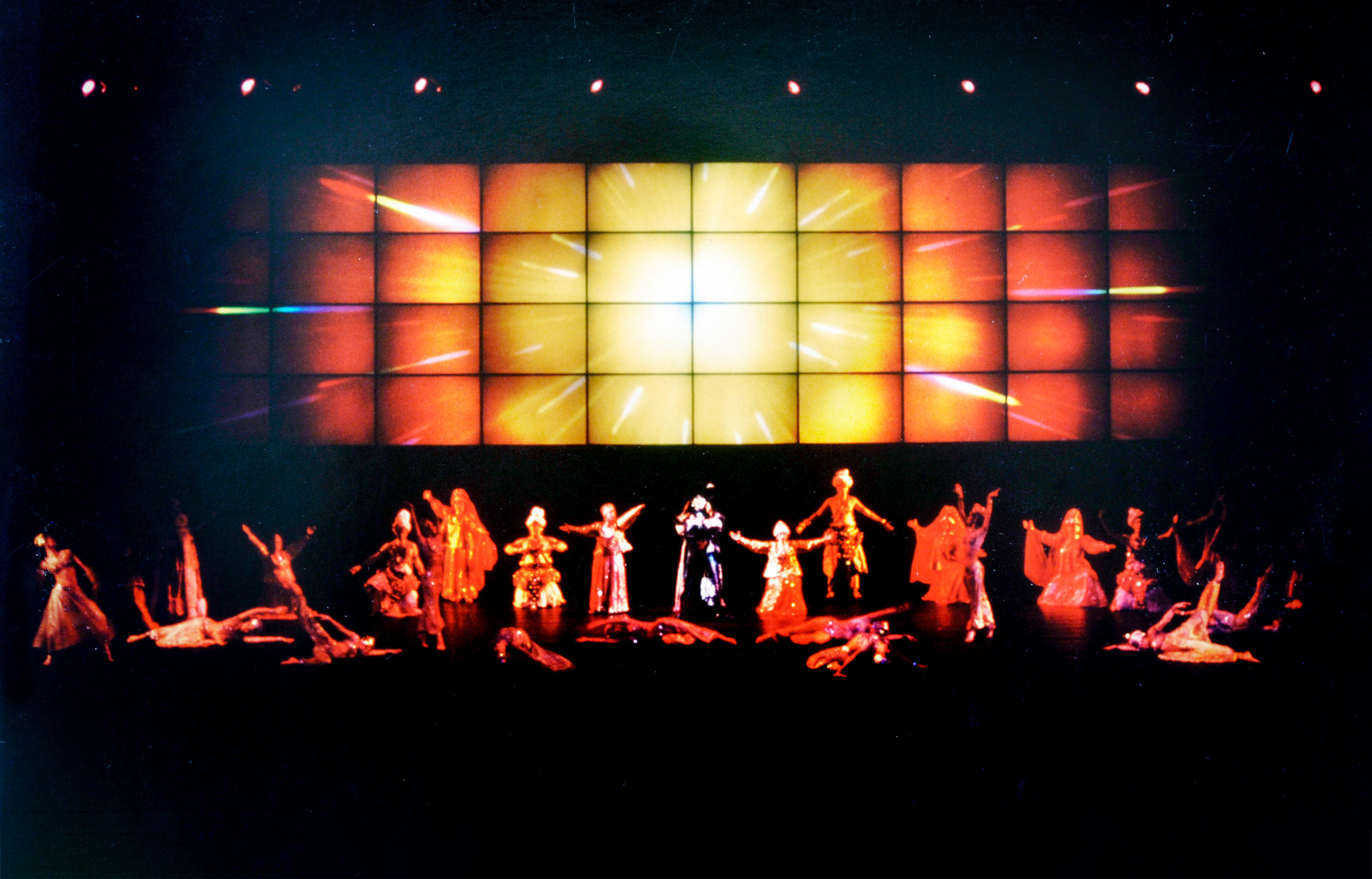
It’s 1948, and it isn’t a great year for alcohol. Prohibition has come and gone, and booze is a buyer’s market again. That much is obvious from Seagram’s annual sales meeting, an 11-city traveling extravaganza designed to drum up nationwide sales. No expense has been spared: there’s the two-hour, professionally acted stage play about the life of a whiskey salesman. The beautiful anteroom displays. The free drinks. But the real highlight is a slideshow.
To call the Seagram-Vitarama a slideshow is an understatement. It’s an experience: hundreds of images of the distilling process, set to music, projected across five 40-by-15-foot screens. “It is composed of pictures, yet it is not static,” comments one awed witness. “The overall effect is one of magnificence.” Inspired by an Eastman Kodak exhibit at the 1939 World’s Fair, the Seagram-Vitarama is the first A/V presentation ever given at a sales meeting. It will not be the last.
In the late ’40s, multimedia was a novelty. But by the early 1960s, nearly all companies with national advertising budgets were using multimedia gear—16-millimeter projectors, slide projectors, filmstrip projectors, and overheads—in their sales training and promotions, for public relations, and as part of their internal communications. Many employed in-house A/V directors, who were as much showmen as technicians. Because although presentations have a reputation for being tedious, when they’re done right, they’re theater. The business world knows it. Ever since the days of the Vitarama, companies have leveraged the dramatic power of images to sell their ideas to the world.
Next slide, please
The sound of slides clacking is deafening. But it doesn’t matter, because the champagne is flowing and the sound system is loud. The 2,500 dignitaries and VIPs in the audience are being treated to an hourlong operetta about luxury travel. Onstage, a massive chorus, the entire Stockholm Philharmonic, and some 50 dancers and performers are fluttering around a pair of Saab 9000CD sedans. Stunning images of chrome details, leather seats, and open roads dance across a 26-foot-tall screen behind them. The images here are all analog: nearly 7,000 film slides, carefully arranged in a grid of 80 Kodak projectors. It’s 1987, and slideshows will never get any bigger than this.
Before PowerPoint, and long before digital projectors, 35-millimeter film slides were king. Bigger, clearer, and less expensive to produce than 16-millimeter film, and more colorful and higher-resolution than video, slides were the only medium for the kinds of high-impact presentations given by CEOs and top brass at annual meetings for stockholders, employees, and salespeople. Known in the business as “multi-image” shows, these presentations required a small army of producers, photographers, and live production staff to pull off. First the entire show had to be written, storyboarded, and scored. Images were selected from a library, photo shoots arranged, animations and special effects produced. A white-gloved technician developed, mounted, and dusted each slide before dropping it into the carousel. Thousands of cues were programmed into the show control computers—then tested, and tested again. Because computers crash. Projector bulbs burn out. Slide carousels get jammed.
“When you think of all the machines, all the connections, all the different bits and pieces, it’s a miracle these things even played at all,” says Douglas Mesney, a commercial photographer turned slide producer whose company Incredible Slidemakers produced the 80-projector Saab launch. Now 77 years old, he’s made a retirement project of archiving the now-forgotten slide business. Mesney pivoted to producing multi-image shows in the early 1970s after an encounter with an impressive six-screen setup at the 1972 New York Boat Show. He’d been shooting spreads for Penthouse and car magazines, occasionally lugging a Kodak projector or two to pitch meetings for advertising clients. “All of a sudden you look at six projectors and what they can do, and you go, Holy mackerel,” he remembers.
“All of a sudden you look at six projectors and what they can do, and you go, Holy mackerel.”
Douglas Mesney, a commercial photographer
Six was just the beginning. At the height of Mesney's career, his shows called for up to 100 projectors braced together in vertiginous rigs. With multiple projectors pointing toward the same screen, he could create seamless panoramas and complex animations, all synchronized to tape. Although the risk of disaster was always high, when he pulled it off, his shows dazzled audiences and made corporate suits look like giants. Mesney’s clients included IKEA, Saab, Kodak, and Shell; he commanded production budgets in the hundreds of thousands of dollars. And in the multi-image business, that was cheap. Larger A/V staging companies, like Carabiner International, charged up to $1 million to orchestrate corporate meetings, jazzing up their generic multi-image “modules” with laser light shows, dance numbers, and top-shelf talent like Hall & Oates, the Allman Brothers, and even the Muppets. “I liken it to being a rock-and-roll roadie, but I never went on the tour bus,” explains Susan Buckland, a slide programmer who spent most of her career behind the screen at Carabiner.
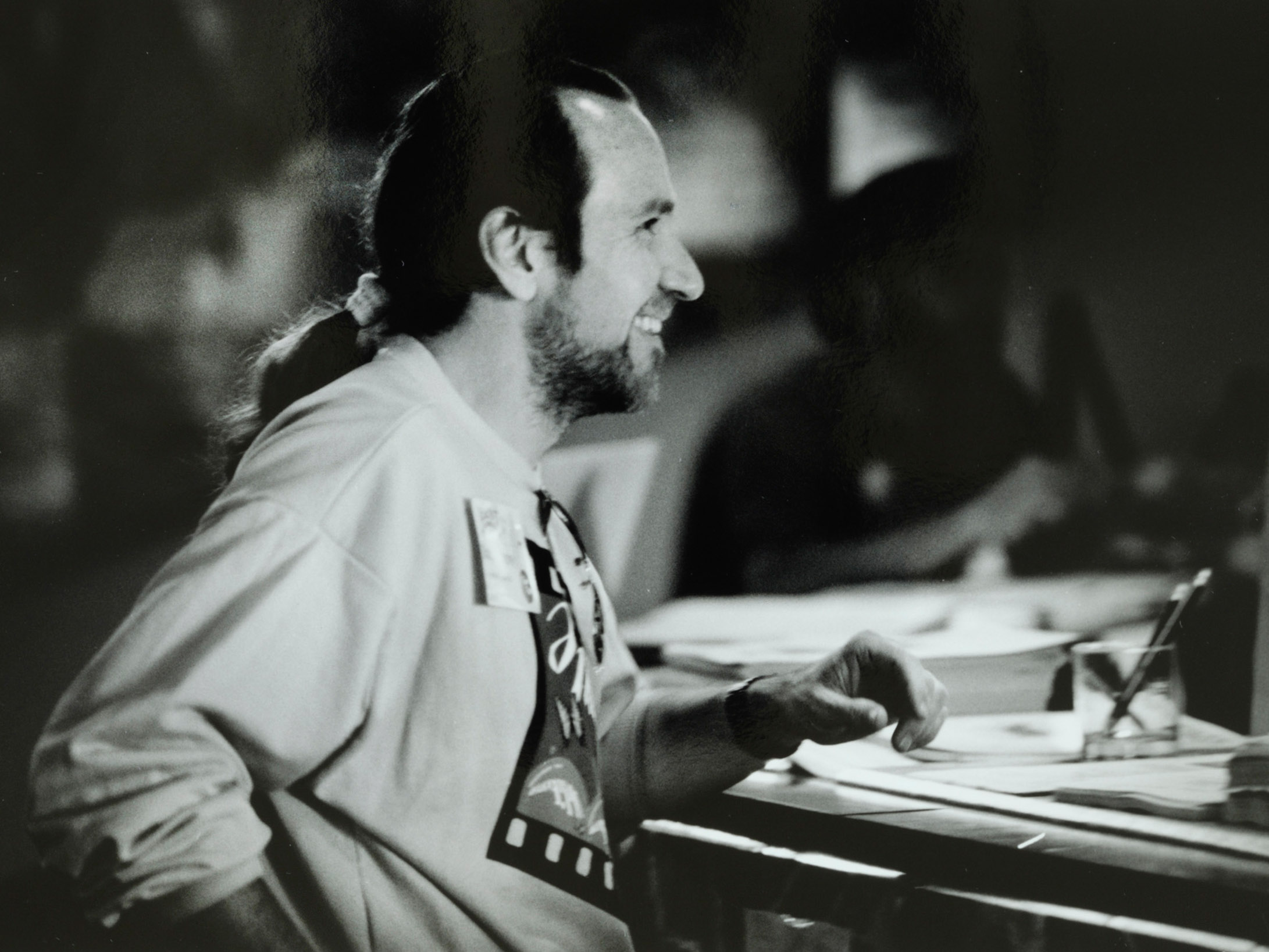
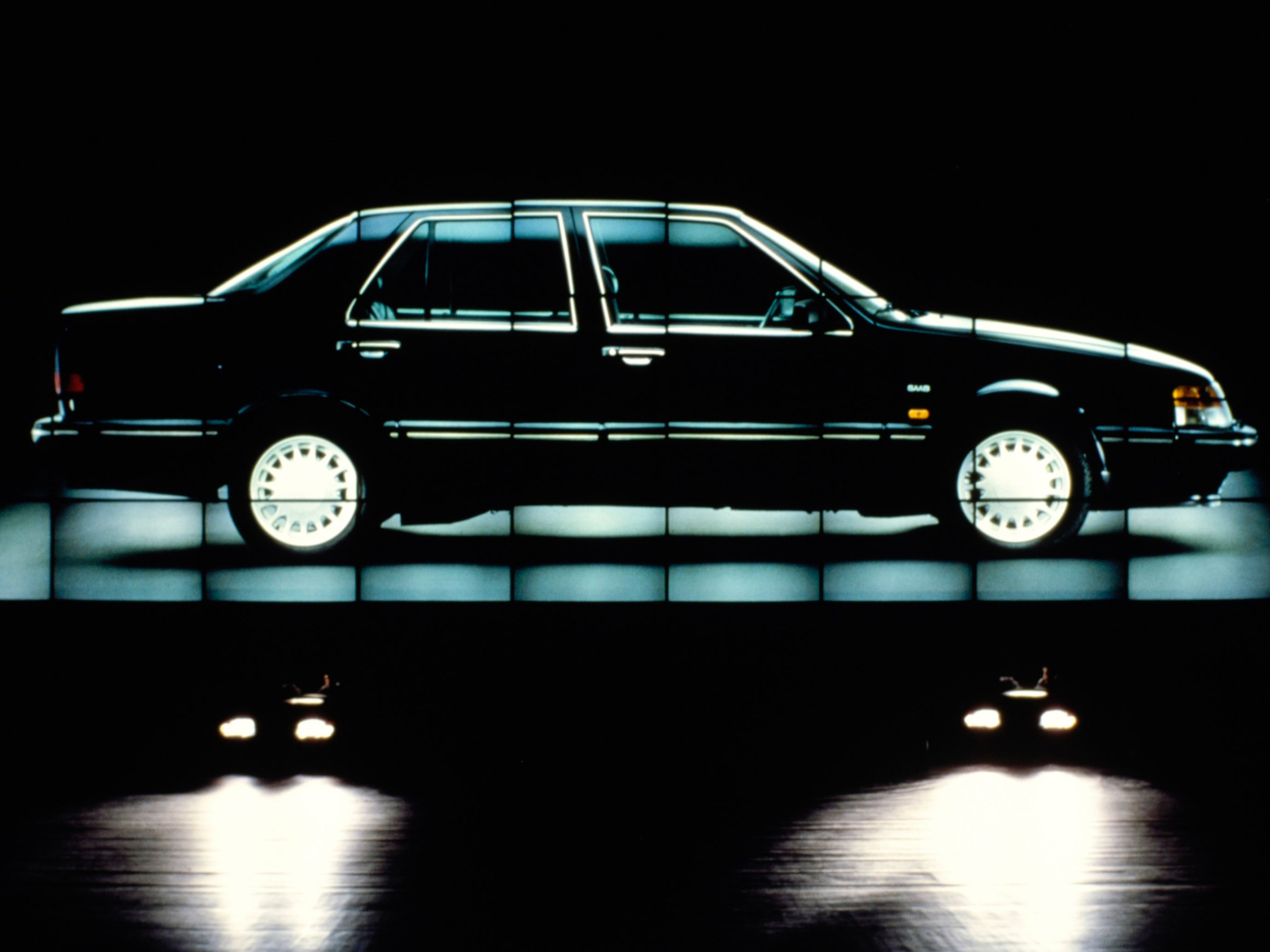
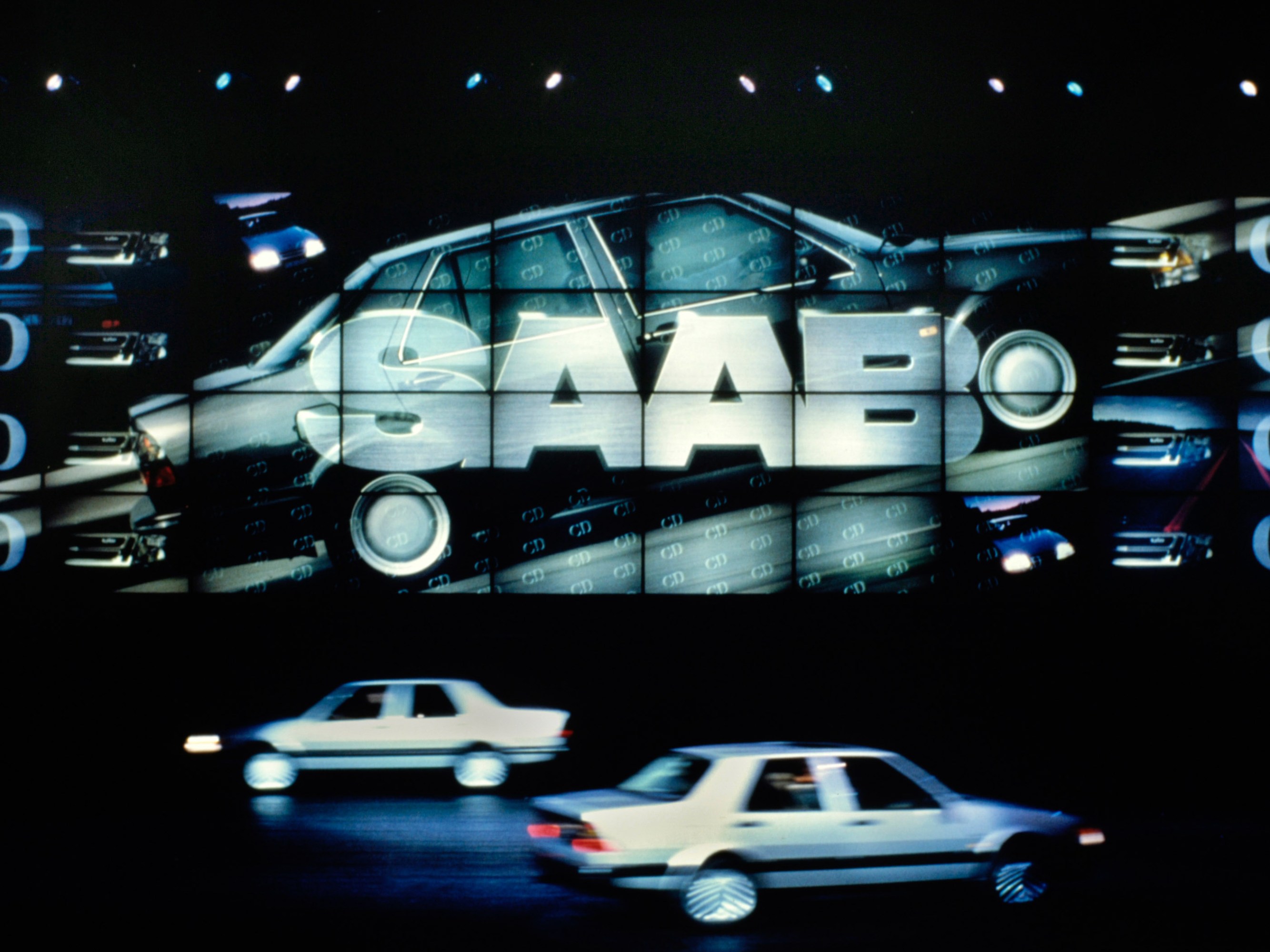
From its incorporation in 1976 to the mid-1980s, the Association for Multi-Image, a trade association for slide producers, grew from zero to 5,000 members. At its peak, the multi-image business employed some 20,000 people and supported several festivals and four different trade magazines. One of these ran a glowing profile of Douglas Mesney in 1980; when asked for his prognosis about the future of slides, he replied: “We could make a fortune or be out of business in a year.” He wasn’t wrong.
At the time, some 30 manufacturers of electronic slide programming devices vied for the multi-image dollar. To meet the demand for high-impact shows, the tech had quickly evolved from manual dissolve units and basic control systems—programmed with punched paper tape, and then audiocassette—to dedicated slide control computers like the AVL Eagle I, which could drive 30 projectors at once. The Eagle, which came with word processing and accounting software, was a true business computer—so much so that when Eagle spun off from its parent company, Audio Visual Labs, in the early ’80s, it became one of Silicon Valley’s most promising computer startups. Eagle went public in the summer of 1983, making its president, Dennis R. Barnhart, an instant multimillionaire. Only hours after the IPO, Barnhart plowed his brand-new cherry-red Ferrari through a guardrail near the company’s headquarters in Los Gatos, California, flipped through the air, crashed into a ravine, and died. The slide business would soon follow.
Douglas Mesney likes to say that if you never saw a slide show, you never will. The machines to show them have been landfilled. The slides themselves were rarely archived. Occasionally a few boxes containing an old multi-image “module” will turn up in a storage unit, and occasionally those will even be undamaged. But with the exception of a few hobbyists and retired programmers, the know-how to restore and stage multi-image slideshows is scarce. This leaves former slide professionals at a loss. “All of us are devastated that none of the modules survived,” says Susan Buckland. “Basically, I don’t have a past, because I can’t explain it.” The entire industry, which existed at an unexpected intersection of analog and high-tech artistry, came and went in a little over 20 years.
Presentations, like porn, have always pushed technology forward; in the multi-image days, producers like Mesney took the slide as far as it could go, using every tool available to create bigger and bolder shows. Mesney claims to have set the land speed record for a slide presentation with a three-minute-long, 2,400-slide show, but even at top speed, slides are static. The computers that controlled them, however, were not—and it wasn’t long before they evolved beyond the medium. “Back then, computers were fast enough to tell slides what to do, but they weren’t fast enough to actually create the images themselves,” explains Steven Michelsen, a former slide programmer who restores and runs old multi-image shows in his Delaware garage. “It took another 10 or 15 years until you could run a show straight from your computer and have the images look worth looking at,” he adds.
The last slide projector ever made rolled off the assembly line in 2004. The inside of its casing was signed by factory workers and Kodak brass before the unit was handed over to the Smithsonian. Toasts and speeches were made, but by then they were eulogies, because PowerPoint had already eaten the world.
Inventing PowerPoint
The Hotel Regina is an Art Nouveau marvel overlooking the Tuileries Garden and the Louvre. But on this day in 1992, its Old World meeting rooms have been retrofitted with advanced video technology. The color projector in the back of the room, the size of a small refrigerator, cost upwards of $100,000 and takes an hour to warm up. A team of technicians has spent the better part of the last 48 hours troubleshooting to ensure that nothing goes wrong when Robert Gaskins, the fastidious architect of a new piece of software called PowerPoint 3.0, walks into the room. He’ll be carrying a laptop under his arm, and when he reaches the lectern, he’ll pick up a video cable, plug it in, and demonstrate for the first time something that has been reproduced billions of times since: a video presentation, running straight off a laptop, in full color. The audience, full of Microsoft associates from across Europe, will go bananas. They “grasped immediately what the future would bring for their own presentations,” Gaskins later wrote. “There was deafening applause.”
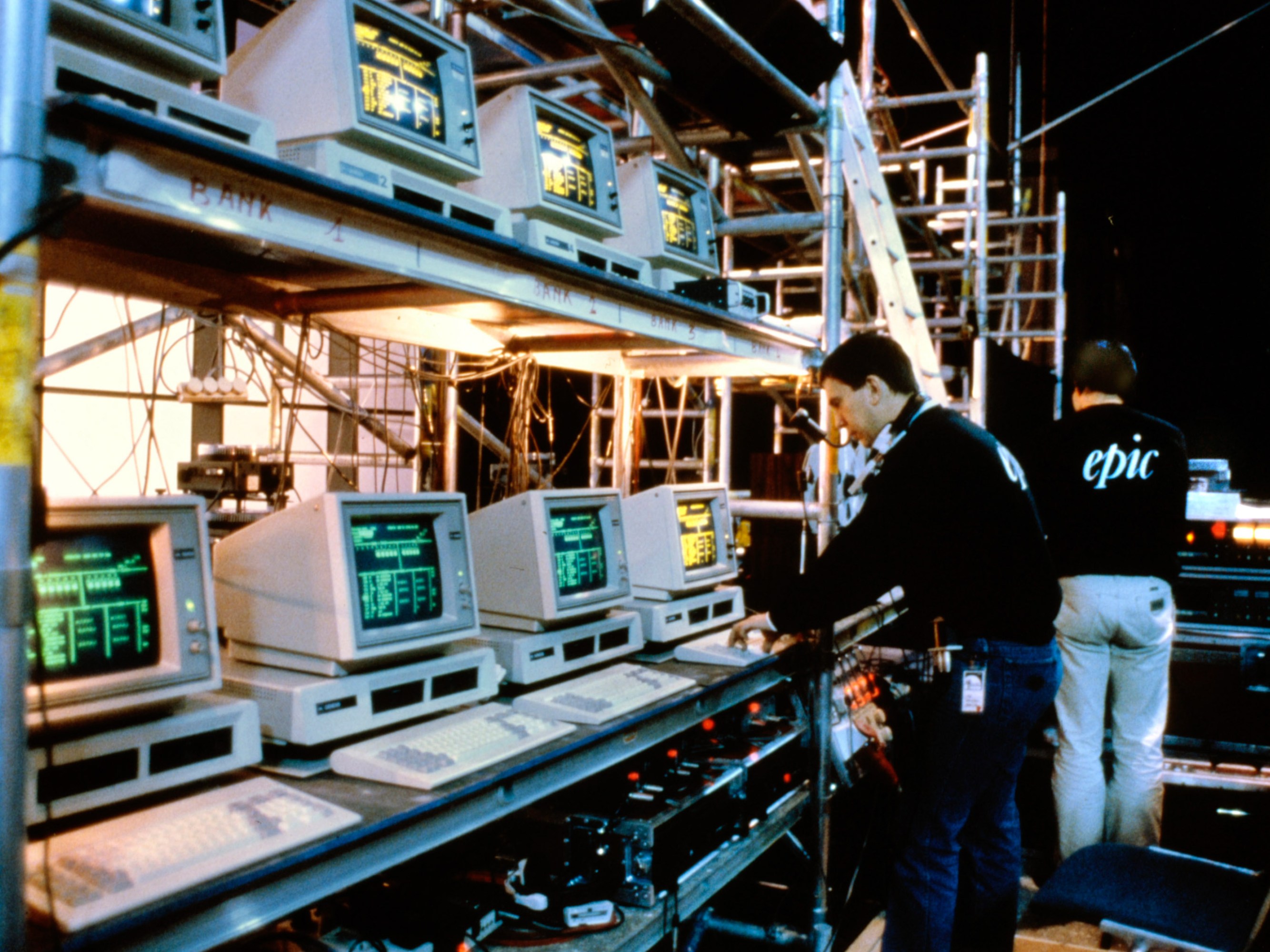
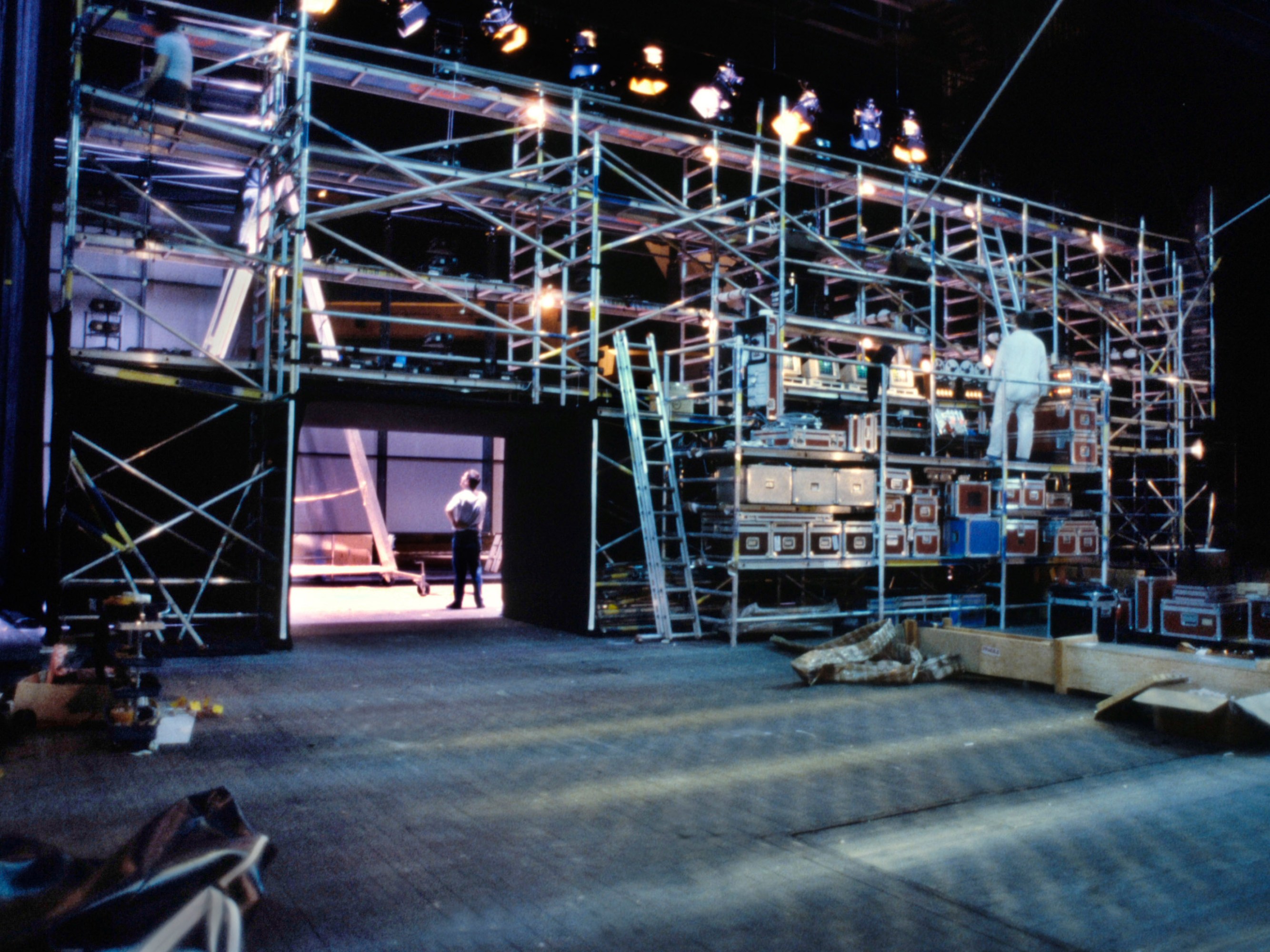
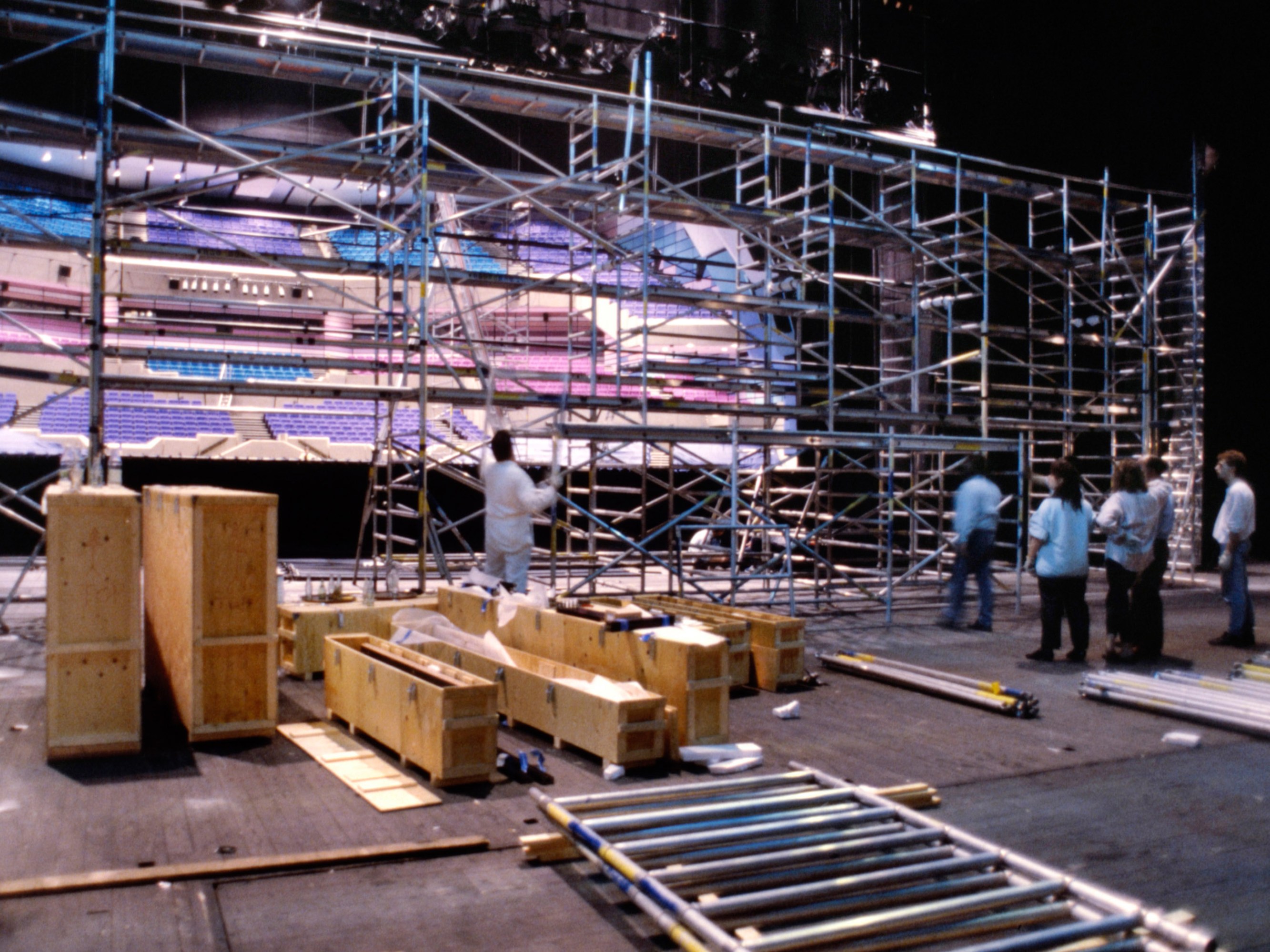
It’s hard now to imagine deafening applause for a PowerPoint—almost as hard as it is to imagine anyone but Bob Gaskins standing at this particular lectern, ushering in the PowerPoint age. Presentations are in his blood. His father ran an A/V company, and family vacations usually included a trip to the Eastman Kodak factory. During his graduate studies at Berkeley, he tinkered with machine translation and coded computer-generated haiku. He ran away to Silicon Valley to find his fortune before he could finalize his triple PhDs in English, linguistics, and computer science, but he brought with him a deep appreciation for the humanities, staffing his team with like-minded polyglots, including a disproportionately large number of women in technical roles. Because Gaskins ensured that his offices—the only Microsoft division, at the time, in Silicon Valley—housed a museum-worthy art collection, PowerPoint’s architects spent their days among works by Frank Stella, Richard Diebenkorn, and Robert Motherwell.
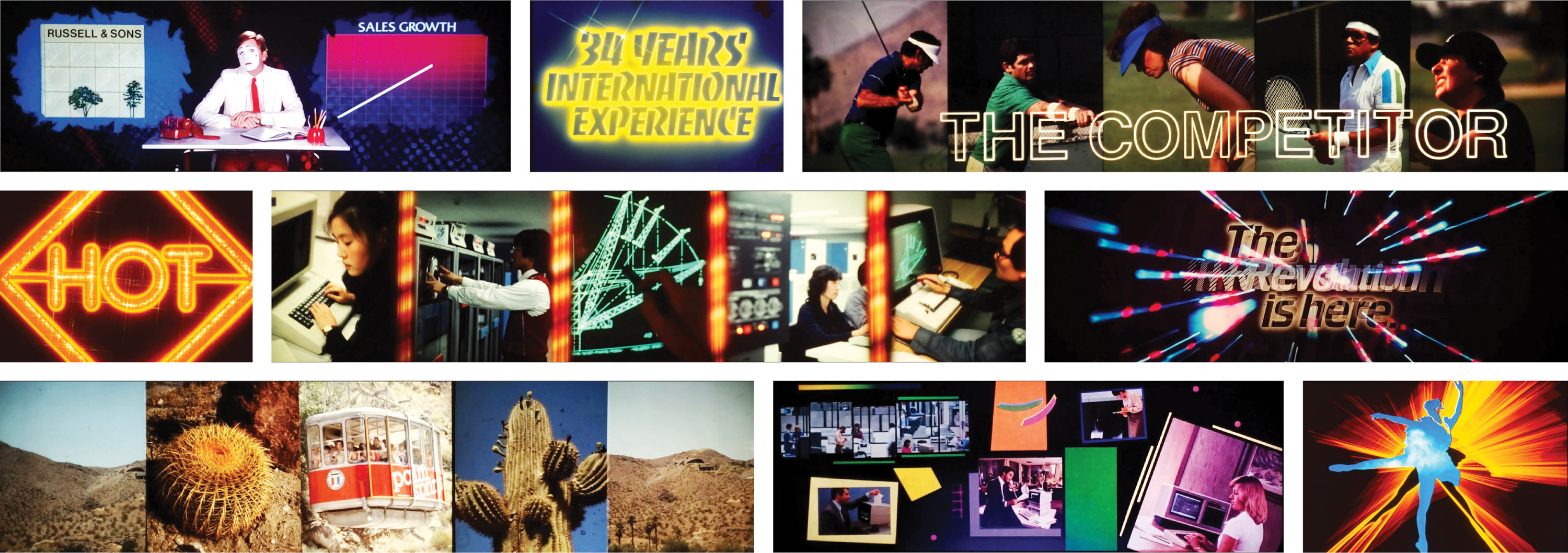
Gaskins’s 1984 proposal for PowerPoint, written when he was VP of product development at the Sunnyvale startup Forethought, is a manifesto in bullet points. It outlines the slumbering, largely-hidden-from-view $3.5 billion business presentation industry and its enormous need for clear, effective slides. It lists technology trends—laser printers, color graphics, “WYSIWYG” software—that point to an emerging desktop presentation market. It’s a stunningly prescient document throughout. But Gaskins italicized only one bullet point in the whole thing.
User benefits:
Allows the content-originator to control the presentation.
This is Gaskins’s key insight: a presentation’s message is inevitably diluted when its production is outsourced. In the early ’80s, he meant that literally. The first two versions of PowerPoint were created to help executives produce their own overhead transparencies and 35-millimeter slides, rather than passing the job off to their secretaries or a slide bureau.
PowerPoint had become shorthand for the stupefying indignities of office life—a 2001 New Yorker profile summed it up as “software you impose on other people.”
“In the ’50s, ’60s, and early ’70s, information flow was narrow,” explains Sandy Beetner, former CEO of Genigraphics, a business graphics company that was, for several decades, the industry leader in professional presentation graphics. Their clients were primarily Fortune 500 companies and government agencies with the resources to produce full-color charts, 3D renderings, and other high-tech imagery on those slides. Everyone else was limited to acetate overheads and—gasp—words. “Prior to PowerPoint,” she says, “people communicated in black and white. There was just so much missed in that environment.”
Beetner oversaw Genigraphics’ national network service bureaus, which were located in every major American city and staffed 24 hours a day, 365 days a year, by graphic artists prepared to produce, polish, and print slides. The company was so vital to presentational culture that Gaskins negotiated a deal to make Genigraphics the official 35-millimeter slide production service for PowerPoint 2.0; a “Send to Genigraphics” menu command was baked into PowerPoint until 2003. This, incidentally, was around the same time that Kodak stopped making Carousel projectors.


Gaskins retired from Microsoft in 1993 and moved to London. He returned to the States 10 years later, an expert in antique concertinas. By then, PowerPoint had become shorthand for the stupefying indignities of office life. A 2001 New Yorker profile summed it up as “software you impose on other people”; the statistician Edward Tufte, known for his elegant monographs about data visualization, famously blamed the 2003 Columbia shuttle disaster on a bum PowerPoint slide. Gaskins’s software, Tufte argued, produces relentlessly sequential, hierarchical, sloganeering, over-managed presentations, rife with “chartjunk” and devoid of real meaning. No wonder software corporations loved it.
Robert Gaskins is remarkably sympathetic to these views, not least because Tufte’s mother, the Renaissance scholar Virginia Tufte, mentored him as an undergraduate in the English department at the University of Southern California. In a reflection written on the 20th anniversary of PowerPoint’s introduction, Gaskins acknowledged that “more business and academic talks look like poor attempts at sales presentations,” a phenomenon he blamed as much on a “mass failure of taste” as on PowerPoint itself, a tool so powerful it collapsed all preexisting contexts. Not everything’s a sales presentation; nor should it be. But PowerPoint made it easy to add multimedia effects to informal talks, empowering lay users to make stylistic decisions once reserved for professionals. To paraphrase an early PowerPoint print ad: now the person making the presentation made the presentation. That those people weren’t always particularly good at it didn’t seem to matter.
What did matter was that presentations were no longer reserved for year-end meetings and big ideas worthy of the effort and expense required to prepare color slides. “The scalability of information and audience that PowerPoint brought to the party was pretty incredible,” says Beetner, whose company has survived as a ghost in the machine, in the form of PowerPoint templates and clip art. “It opened up the channels dramatically, and pretty quickly. There isn’t a student alive, at any level, that hasn’t seen a PowerPoint presentation.” Indeed, PowerPoint is used in religious sermons; by schoolchildren preparing book reports; at funerals and weddings. In 2010, Microsoft announced that PowerPoint was installed on more than a billion computers worldwide.
At this scale, PowerPoint’s impact on how the world communicates has been immeasurable. But here’s something that can be measured: Microsoft grew tenfold in the years that Robert Gaskins ran its Graphics Business Unit, and it has grown 15-fold since. Technology corporations, like PowerPoint itself, have exploded. And so have their big presentations, which are no longer held behind closed doors. They’re now semi-public affairs, watched—willingly and enthusiastically—by consumers around the world. Nobody has to worry about slide carousels getting jammed anymore, but things still go haywire all the time, from buggy tech demos to poorly-thought-out theatrics.
When everything works, a good presentation can drive markets and forge reputations. Of course, this particular evolution wasn’t exclusively Microsoft’s doing. Because perhaps the most memorable corporate presentation of all time—Steve Jobs’s announcement of the iPhone at Macworld 2007— wasn’t a PowerPoint at all. It was a Keynote.
Claire L. Evans is a writer and musician exploring ecology, technology, and culture.
Deep Dive
Business
This solar giant is moving manufacturing back to the US
Tariffs and IRA tax incentives are starting to reshape global supply chains—but vast challenges lie ahead, explains Shawn Qu, founder of Canadian Solar.
Let’s not make the same mistakes with AI that we made with social media
Social media’s unregulated evolution over the past decade holds a lot of lessons that apply directly to AI companies and technologies.
Scaling individual impact: Insights from an AI engineering leader
The rapid pace of AI has put more emphasis on individual contributors at the executive level. Capital One's Grant Gillary explores the unique challenges of being a senior engineering executive and an individual contributor.
The world’s most famous concert pianos got a major tech upgrade
Steinway's Spirio pianos let you experience performances by piano virtuosos in your living room.
Stay connected
Get the latest updates from
MIT Technology Review
Discover special offers, top stories, upcoming events, and more.